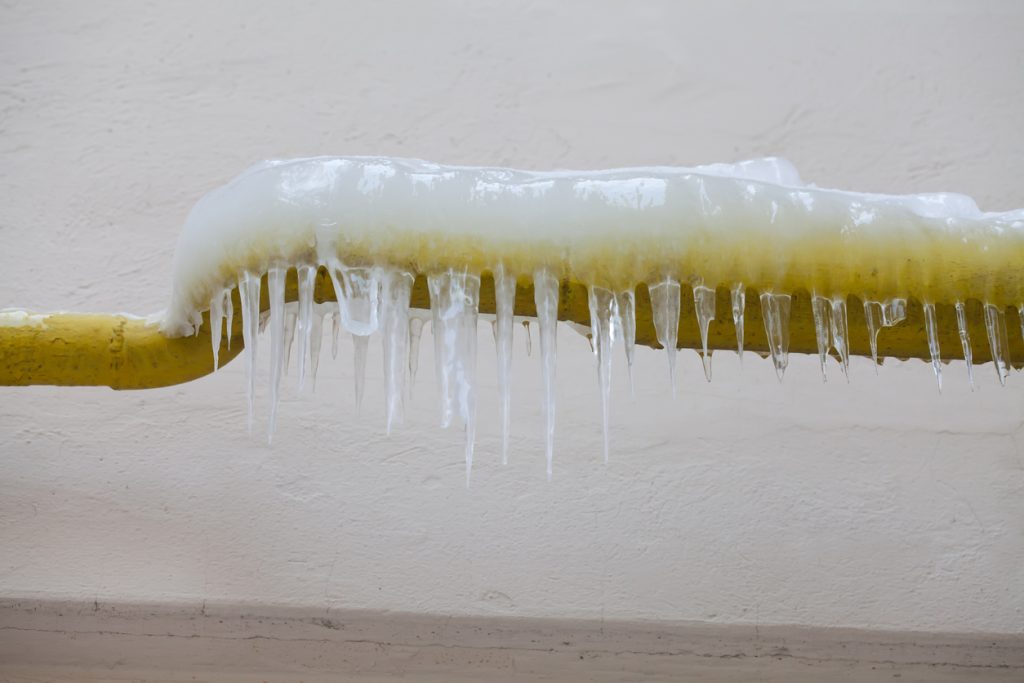Almost everyone seems to have their personal opinion in relation to Prevent Frozen Pipes .

Winter can damage your plumbing, particularly by freezing pipes. Here's just how to avoid it from occurring and what to do if it does.
Introduction
As temperature levels decrease, the risk of frozen pipelines rises, potentially causing costly repair work and water damage. Comprehending exactly how to avoid frozen pipes is important for house owners in cool environments.
Comprehending Frozen Pipes
What causes pipes to ice up?
Pipes freeze when revealed to temperatures below 32 ° F (0 ° C) for prolonged durations. As water inside the pipelines freezes, it broadens, taxing the pipeline wall surfaces and possibly triggering them to break.
Threats and problems
Frozen pipes can result in water disruptions, residential property damages, and pricey repairs. Burst pipelines can flooding homes and create considerable architectural damages.
Indicators of Frozen Water Lines
Identifying frozen pipelines early can stop them from breaking.
Exactly how to determine frozen pipes
Search for lowered water flow from faucets, uncommon odors or noises from pipes, and visible frost on subjected pipes.
Prevention Tips
Protecting vulnerable pipelines
Wrap pipes in insulation sleeves or make use of warm tape to safeguard them from freezing temperatures. Concentrate on pipelines in unheated or external locations of the home.
Home heating strategies
Maintain interior spaces effectively heated, specifically areas with pipes. Open cabinet doors to enable warm air to distribute around pipes under sinks.
Securing Outdoor Plumbing
Yard hose pipes and exterior faucets
Detach and drain pipes garden pipes before wintertime. Mount frost-proof spigots or cover outside taps with insulated caps.
What to Do If Your Pipes Freeze
Immediate activities to take
If you believe frozen pipes, keep taps open up to alleviate pressure as the ice melts. Utilize a hairdryer or towels taken in warm water to thaw pipelines slowly.
Long-Term Solutions
Structural adjustments
Think about rerouting pipes away from exterior walls or unheated areas. Add extra insulation to attics, basements, and crawl spaces.
Upgrading insulation
Invest in high-quality insulation for pipes, attic rooms, and wall surfaces. Correct insulation assists preserve consistent temperatures and lowers the threat of frozen pipes.
Conclusion
Preventing icy pipes requires aggressive procedures and quick feedbacks. By recognizing the causes, signs, and safety nets, property owners can protect their pipes throughout winter.
6 Proven Ways to Prevent Frozen Pipes and Protect Your Home
Disconnect and Drain Garden Hoses
Before winter arrives, start by disconnecting your garden hoses and draining any remaining water. Close the shut-off valves that supply outdoor hose bibs and leave the outdoor faucet open to allow any residual water to drain. For extra protection, consider using faucet covers throughout the colder months. It’s also important to drain water from any sprinkler supply lines following the manufacturer’s directions.
Insulate Exposed Pipes
Insulating your pipes is an effective way to prevent freezing. Pipe insulation is readily available at home improvement stores and is relatively inexpensive. Pay close attention to pipes in unheated areas such as the attic, basement, crawl spaces, or garage. Apply foam insulation generously to create a buffer against the cold. You can also wrap your pipes in heat tape or thermostat-controlled heat cables for added warmth.
Seal Air Leaks
Inspect your home for any cracks or openings that could let in cold air. Seal any holes around the piping in interior or exterior walls, as well as the sill plates where your home rests on its foundation. Additionally, make sure to keep your garage door closed unless you’re entering or exiting. Leaving it open creates a significant air leak that can lead to frozen pipes.
Allow Warm Air Circulation
During cold snaps, it’s essential to allow warm air to circulate evenly throughout your home. Leave interior doors ajar to promote better airflow. Open kitchen and bathroom cabinets to help distribute heat consistently around the rooms. If you have small children or pets, be sure to remove any household chemicals or potentially harmful cleaners from open cabinets for safety.
Let Faucets Drip
A small trickle of water can make a big difference in preventing ice formation inside your pipes. When temperatures drop significantly, start a drip of water from all faucets served by exposed pipes. This continuous flow helps prevent the water from freezing. Additionally, running a few faucets slightly can relieve pressure inside the pipes, reducing the chances of a rupture if the water inside does freeze.
https://choateshvac.com/6-proven-ways-to-prevent-frozen-pipes-and-protect-your-home/

We hope you enjoyed reading our article on How To Avoid Freezing Pipes. Thank you so much for taking a few minutes to read through our piece. Enjoyed reading our blog entry? Please share it. Let others check it out. I praise you for being here. Revisit us soon.
Get Offer
Comments on “How to Protect Pipes from Cold Weather Damage: Essential Tips”